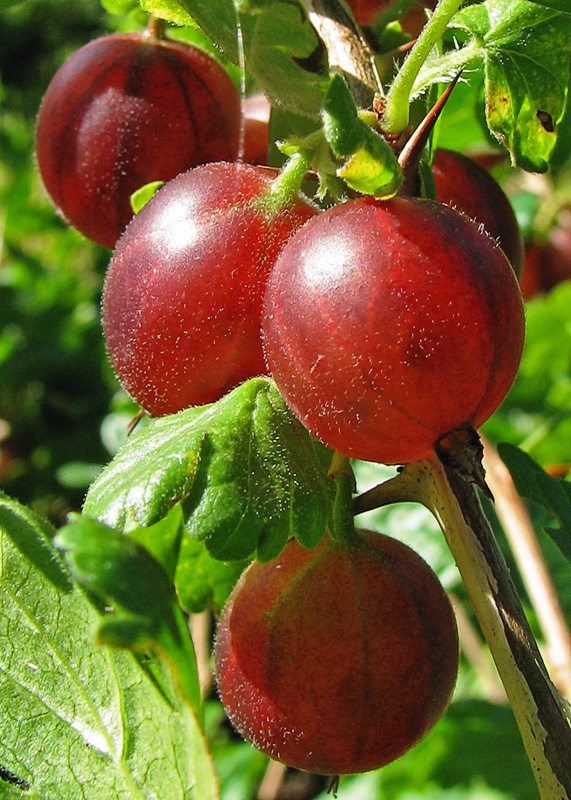Usually semi-translucent and green to burgundy in color, Gooseberries are in the Family of Grossulariaceae from the genus Ribes. Wild gooseberry is a 0.5-2 m tall perennial shrub. It grows upright or spreading, and has grey to brownish branches. The nodes where the leaves are attached are armed with 1-3 chestnut-brown spikes, the internodes sometimes bear bristles. The leaves are alternate, hairy, and 2-6 cm wide with toothed margins. Its Flower colors are pink, yellow, greenish-white. Gooseberries are self-fruitful, so they will not require a pollinator plant. The two main species of gooseberries are European gooseberries and American gooseberries and there are several cultivars of each. Some varieties don’t have thorns but many do.






